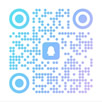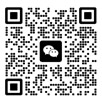[例3]
1 How did you spend your 20 years birthday? What presents did you get from your parents?
2 Do you know your parents’ birthday? What do you usually do to celebrate their birthday?
3 Suppose your mother were fifty tomorrow, what birthday present would you send her? If you were too busy, you can’t meet her, what would you do?
4 How do you understand that blood is thicker than water?
这些问题都没有标准答案属于开放性话题,且基于学生的真实生活经历,学生易于回答,乐于参与,能很好地激活学生大脑中对于从礼物这一概念引申出亲情话题的已有图式,为构建新的图式做好了准备。
(2) 讨论关键词
关键词是与文章主题紧密相关的词语,能启动学生头脑中的相关图式。文化图式是内容图式的重要组成部分,对于阅读中具有文化共性的文化图式,能帮助学生引发出相应的内容图式。一般在学生阅读前,可让学生了解相关资料或背景知识,使他们建立起与篇章内容相关的文化图式。讨论关键词这一方式能达到介绍背景知识,构建内容图式的效果。
[例4]
笔者在课前给学生布置了任务,让学生以present为关键词,通过画语义图(Semantic Map)的方式讨论关键词。

Person Source Delivery Occasion Present Friend Family The aged Relatives Colleague Packed Express Face-to-face faceace Home-made Nature Machine-made Birthday Baby-shower Wedding Bridal shower kids Festivals Stationary Game machinesne A book A table lamp A pair of slippers A cardigan 学生对于present 这一关键词并不陌生,课上笔者和学生在黑板上一同完成这一语义图。这语义图从送礼的人群、送礼的场合、送礼的方式、礼物的来源、礼物的种类等方面展示了西方国家的送礼特点,预报了学生所知道的知识,复习了学过的知识,同时教师也可以根据阅读文章内容,在完成语义图时强调西方国家在送礼方面的禁忌与习俗、送礼的真正意义之所在,以达到帮助学生构建内容图式的效果。
(3) 预测课文内容
阅读过程是一个积极的猜测过程。这些猜测随着阅读的继续有的得以证实,有的则被否定。Collins和Smith把预测定义为“对将要发生的事情的假设。”他们认为好的读者常常对文章的内容和形式做出预测。它可以帮助学生激活他们大脑中的图式,使学生大脑中的旧知和新知结合,提高阅读效率。Stott(2001)在对读前活动的设计的论述中提到让学生根据自己的知识和经验提供和课文内容相关的信息以及通过看文章的题目、副标题和插图来猜测文章内容的形式。
[例5]
T: Who can read the foreword introduction for us?
S: They say that blood is thicker than water, that our relatives are more important to us than others. Everyone was so kind to the old lady on her birthday. Surely her daughter would make an even bigger effort to please her?
T: When you read the title “The Present” and the foreword introduction, what do you think the article will tell us?
S1: The old lady got many expensive and exquisite birthday presents from her daughter, which made the old lady satisfied.
S2: The old lady didn’t get any birthday present from her daughter, which made her disappointed.
S3: The old lady got some birthday present she didn’t like from her daughter.
S4: What the old lady wants on her birthday is not material wealth but the true love from her daughter.
T: We can check whose answer is right later.
例5是让学生根据文章的引言和标题预测文章内容。教师应给予学生充分的机会去表达观点,虽然观点可能有多种且差异较大,但教师应把他们预测的内容都分类记录下来,之后让学生通过阅读文章来验证他们预测的正确与否,并帮助学生分析原因。
< >构建形式图式讨论文章体裁结构提供同体裁阅读材料当我们试图理解一个篇章片断时,通常不会把它当作第一次碰到的篇章。恰恰相反,我们通常是要搜寻以前读过该类结构相似的篇章的经验,或依据我们关于篇章结构发展的一般规律的知识,正如我们依赖原有的世界知识理解篇章内容(李战子,1990)。几乎每篇课文都属于某一具体的体裁,而且其篇章结构甚至内容都是可以预测的。因此教师可以结合教学目标,提供同体裁的阅读材料让学生阅读,通过对比和分析,帮助学生构建形式图式。
[例7]
T: Please read the passage The Last Lesson. After reading, you can have a discussion with your partners, try to tell some elements of this short story and divide the passage into several parts, and then tell the main idea of each part.
笔者准备了这篇题为The Last Lesson的文章让学生阅读,此篇文章语言简单、结构清晰,与课文属相同体裁,有相似的篇章结构。读完让学生讨论说出这篇小说的一些基本要素,通过划分段落理清文章的结构,这样的设计能帮助学生巩固在上一环节中构建的图式,为接下来的阅读做好提示与准备。
三、结束语
语言图式、内容图式和形式图式三者相互补充、相辅相成、缺一不可。本文在图式理论的基础上提出的通过构建语言、图式和形式图式样的思路来设计读前活动,为学生激活已有的图式并创建缺失的图式,帮助学生把输入的信息和阅读材料进行互动交流,提高其阅读理解能力。
参考文献:
[1] Barnett, Marva A. More than Meets the Eye. Engle-wood Cliffs: Prentice, 1989.
[2]Cook, guy. Schemas ELT Journal Volume 51/1 Oxford: Oxford University Press, 1997.
[3]Carrell P. L. Interactive Text Processing: Implications for ESL/Second Language Reading Classrooms [A]. Carrell P. L., Devine J, Eskey D. E. Interactive Approaches to Second Language Reading[C]. Cambridge: CUP, 1988.
[4] Goodman, K.S. Reading: A psycholinguistic guessing game [A].In H.Singer, & R.B.Ruddell (Eds.), Theoretical Models and Processes of Reading [C]. Newark, DE: International Reading Association, Inc.,1971.
[5]Gough, P.B. One second of Reading [A].In J.F.Kavanagh, & I.G.Mattingly (Eds.), Language by Ear and by Eye [C].Cambridge, Mass: MIT Press, 1972.
[6] Read J. Assessing vocabulary. Cambridge: CUP, 2000.
[7] Rumelhart, D. E. Toward an interactive model of reading [A]. In S. Dornic (Ed.), Attention and Performance VI [C]. Hillsdale, N. J.: Erlbaum, 1977.
[8] Smith, F. Reading Without Nonsense [M]. New York: Teachers College Press, Columbia University, 1979
[9] Stott N. Helping ESL Students Become Better Readers: Schema Theory Applications and Limitations [J]. The Internet TESL Journal 2001, VII (11).
[10] 彭聃龄, 谭力海.语言心理学[M].北京: 北京师范大学出版社, 1991.
[11] 赵艳芳.认知语言学概论 [M]. 上海: 上海外语教育出版社, 2001.
[12] 谢徐萍.图式理论在英语教学中的地位和作用 [J]. 高教探索, 2004 (3)
[13] 何广铿.英语教学法基础 [M]. 厦门: 暨南大学出版社, 1996.
[14] 王锐, 王丹.语境在阅读理解中的作用[J]. 黑龙江教育学院学报, 2006 (9)
 《中华眼底病》
《中华眼底病》 《矿业装备》
《矿业装备》 《灾害医学与救援》
《灾害医学与救援》 《内蒙古统计》
《内蒙古统计》 《青岛农业大学学报(自然科学版)》
《青岛农业大学学报(自然科学版)》 编辑QQ
编辑QQ  编辑联络
编辑联络 

